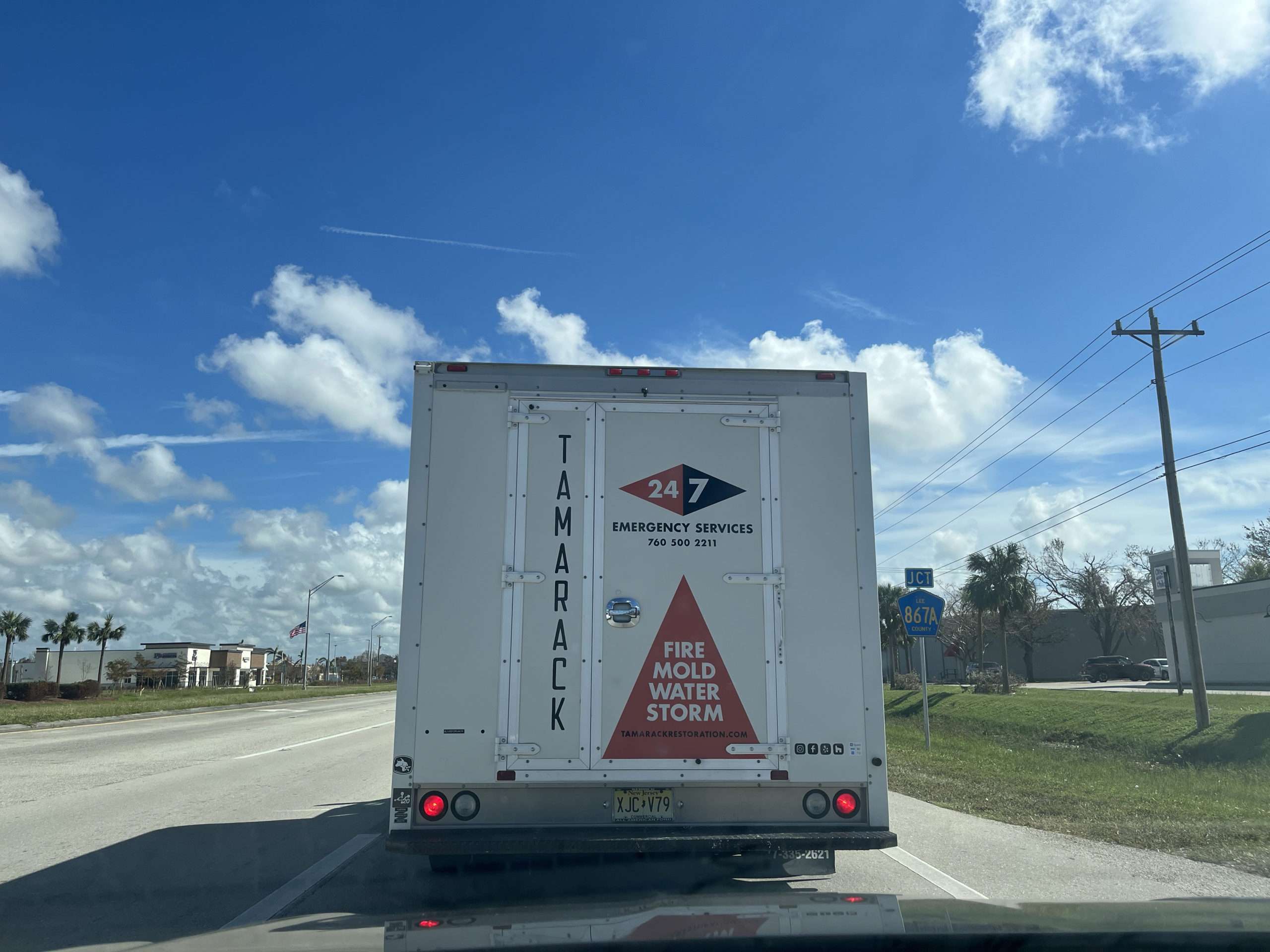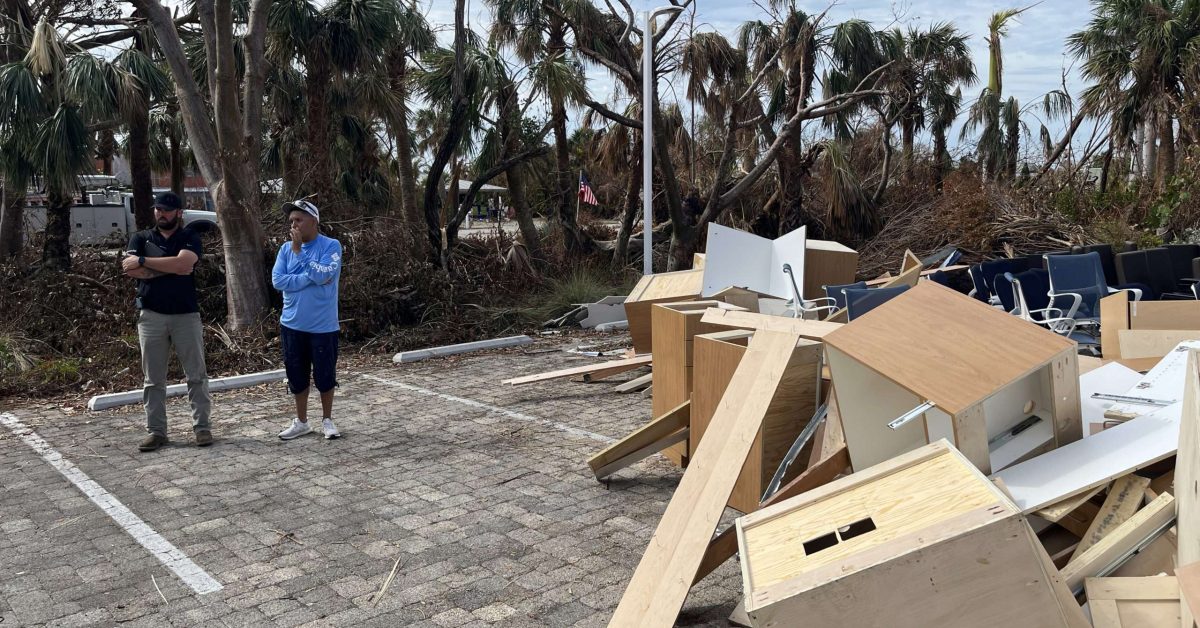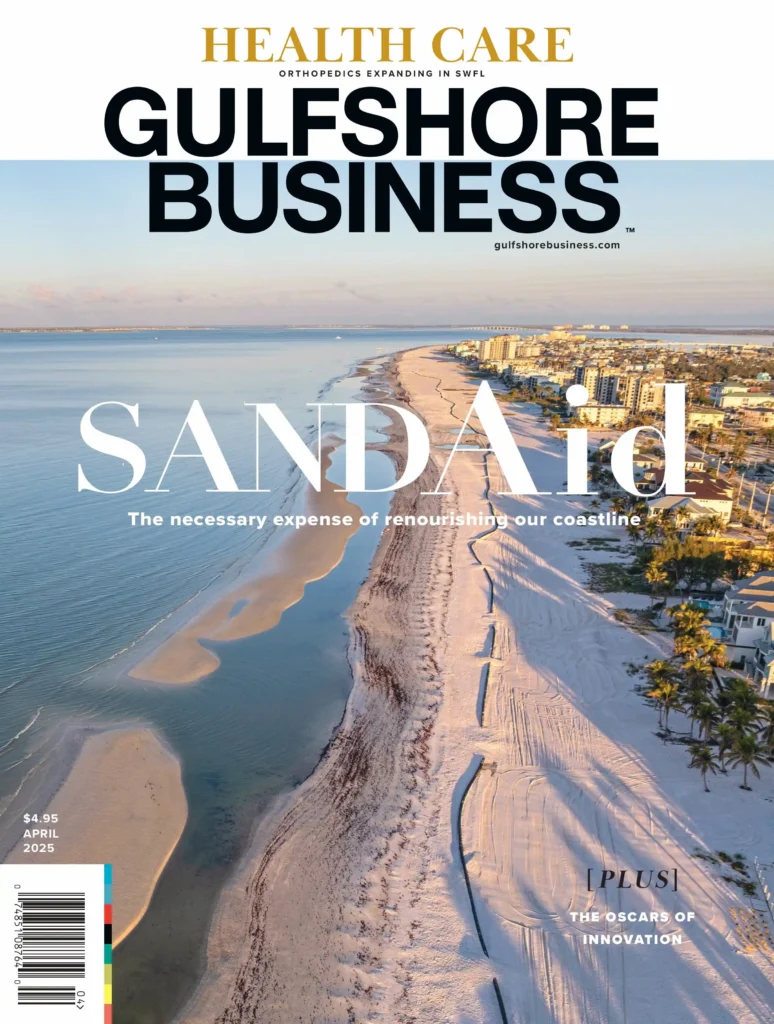Mold mitigation businesses have deployed trucks that are inundating Southwest Florida roads. Hundreds of them have descended upon the area to clean up properties after Hurricane Ian wrecked the coastal areas Sept. 28.
One of the truck drivers made a 5,200-mile round trip from his home in Carlsbad, California, looking for new business opportunities. He found plenty of homeowners in need in Cape Coral and on the river side of McGregor Boulevard in Fort Myers. But Robert Wells, the California-licensed owner of Tamarack Restoration found out the hard way that a law passed by the Florida Legislature last year, combined with Lee County government deferring all new mold mitigation licenses be referred to the state, made it illegal for him to work on cleanup efforts here.
House Bill 735 preempted most licensing to the state and was approved by an 82-32 vote in April 2021. Lee County government responded by phasing out its local contractor licensing board in March 2022, according to Lee County director of communications Betsy Clayton. She declined to have county staff interviewed on this subject. She said there are 104 licensed mold mitigation companies in Florida. Unless there are any legal changes, those will have to serve the estimated 20,000 Lee County flooded properties.
“The state told us they would not facilitate our license there,” Wells said. “So, we left. Never did one job. It was a $10,000 loss for my company. We went down to the county office in Fort Myers and talked to them and asked for temporary licenses. They said no. They said they wanted to keep it in-state, only to in-state contractors. They said it would be a felony if we were found working in Fort Myers or Cape Coral. Do we really want to look at five years in jail? The people were very standoffish. 
“We have family in the area. They said it’s been preached and preached and preached not to accept out-of-state help. If the people aren’t wanting it and the government doesn’t want it?
“We run an honest business. We came back home.”
In mitigating mold, time is of the essence. Snowbirds who return to their second homes on Sanibel Island weeks or months after Hurricane Ian likely will return to total losses of their interiors that could have been mitigated to partial ones had crews been able to react sooner, said Mike Strickland, senior emergency coordinator for Belfor, which is based in Birmingham, Mich., but licensed in Florida and doing mold mitigation work on the island. Just one of his clients, a condominium association, incurred an estimated $50 million in damage.
“I never want to say it’s too late,” Strickland said. “But there should be professionals in there to assess the damages. That should be done as soon as possible.
“Any place the water intrudes from the outside, that is considered black water, it will have to be removed. On any porous materials. That water can also rip up walls. If you have a tidal surge line, that would also have to be removed. We recommend that it’s removed one foot past where the water rose to. The mold can get in there and spread. What you should be concerned about is the interior of the wall cavity. That’s where mold is going to thrive. Mold likes dark, damp places. Which is any porous material such as drywall. Time is pretty much past. The damage is done. So now you have to have an assessment done.”
Wells, who has worked in Florida after hurricanes before, said he could not believe the lack of urgency following this one in Lee County.
“We’re going into these houses, and these people had a foot of water in their house, and they’re not doing anything,” Wells said of last week, when he was scouting potential clients before leaving town. “We didn’t see trucks anywhere working on houses. And that was weird. We got in last Monday, and we started going around on Monday and Tuesday, and Wednesday was when we left. We’re just sitting there seeing no sense of urgency. The water gets in there and gets in your walls. It’ll just be mold now. You go from just regular storm surge damage to secondary damage. And insurance does not cover that.” 
About 5,000 employees of SERVEPRO, a Gallatin, Tennessee-based mold mitigation company that’s licensed in Florida, are among the new temporary residents of Southwest Florida. They came from almost all the lower 48 states with some crews traveling from as far as Hawaii.
“They prepare months in advance, so when a storm hits, they can get on the road as soon as possible,” said Clint Brickles, SERVEPRO disaster response manager. Some of them stay inside an RV or mobile command center while others stay onsite while working to restore hotels.
“Every storm is different, but mitigation efforts can last days to weeks,” Brickles said. “However, remediation and reconstruction can last months to years, depending on the magnitude of damage. Hurricane Ian is one of the largest and most impactful storms Florida and the U.S. has experienced in recent years. This storm caused significant damage, and recovery will be long and tedious.”
SERVEPRO works with clients ranging from small homeowners to large companies with million-square-foot facilities. It has relationships with 500 insurance companies. Brickles advised storm victims to reenter their homes with caution and to take photos and videos of the damage.
“It is important to know that water has entered your home or business may have come into contact with oil, gasoline, raw sewage or other hazardous materials,” Brickles said. “Anything that has touched flood water should be considered contaminated and avoided as much as possible. Do not attempt to operate any electrical equipment while standing in wet or damp locations.”
Strickland predicted the initial cleanup of debris to last three to six months with rebuilding taking much longer.
“That’s the million-dollar question,” Strickland said. “How long will it take to get this thing all done? To repair some of these buildings that are destroyed the way they are, it could be years. Two to three years.”





